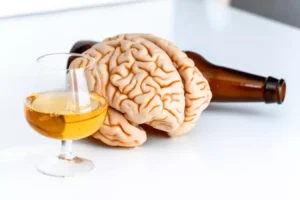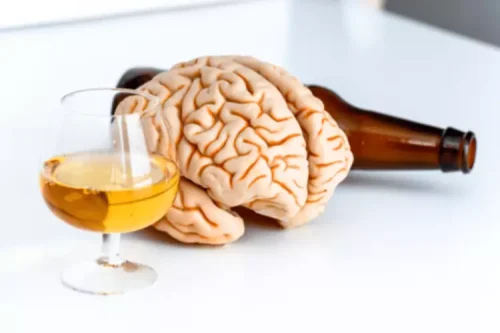
Below the glamorous facade often portrayed in media, cocaine is a powerful stimulant that can elevate mood and energy levels temporarily, but it comes with high addiction potential. The substance works by directly affecting the brain’s reward pathways, creating a strong desire to continue using it. Misuse of opioids (particularly heroin and fentanyl) is extremely dangerous, with approximately 107,000 drug overdose deaths in 2021 involving these drugs. Alcohol acts on dopamine levels to enhance mood, like other drugs, but it also serves as a central nervous system depressant, slowing down nerve firings and the functions of the central nervous system. When people are under the influence of alcohol, they are likely to engage in risky behaviors as inhibitions are lowered. They may also be more talkative and sociable, and may experience mood swings and impaired decision-making and impulse-control abilities.
Alcohol and Drug Abuse Statistics (Facts About Addiction)

Like heroin, cocaine’s effects come on quickly and don’t last long, which can lead people to want to use most addictive drug the drug more frequently to achieve or maintain a high. The use of cocaine results in a flood of the “feel-good” hormone, dopamine, in the brain. This neurotransmitter is released in higher concentrations and blocked from recycling, reinforcing drug use behavior.
Get CNN Health’s weekly newsletter
- The drug does not produce a high unless it is taken in significantly high doses, but it can lead to overdose.
- Over 500,000 Americans over the age of 11 were classified as current methamphetamine users in 2014, according to NSDUH.
- Regarding HIV and sexually transmitted infection (STI) prevention, high-risk substance use is any use by adolescents of substances with a high risk of adverse outcomes.
- PiperazinesThese are a class of drugs that have been used as anti-parasitics and antidepressants, but some have been developed as recreational drugs.
- The opioid epidemic has reached crisis levels in many parts of the world, with increasing rates of addiction and overdose deaths.
- This increased GABA activity results in a tranquilizing effect, making benzos effective in treating conditions such as anxiety disorders, insomnia, and certain seizure disorders.
Alcohol is one of the most widely used and socially accepted addictive substances, according to the NIDA. It’s easy to forget that alcohol is a drug, given its widespread use in society. However, alcohol is a powerful central nervous system depressant with a high potential for addiction. Cocaine addiction can have severe physical consequences such as cardiovascular issues including heart attack and stroke. The drug can also cause mental health problems, such as anxiety, paranoia, and cognitive deficits. Heroin addiction is not just a physical battle; it’s a psychological one too.
Recovery Programs
Our team is ready to help you begin your recovery and to learn how to stay sober long after treatment. Barbiturates are a class of drugs that are used as sedatives, hypnotics, and anticonvulsants. They work by increasing the activity of the neurotransmitter called GABA, which leads to a calming effect. Some common examples of barbiturates include phenobarbital and secobarbital. Caffeine is a widely consumed psychoactive substance, commonly found in coffee, tea, energy drinks, and various foods like chocolate.
- Cocaine is an addictive stimulant derived from coca plants native to South America.
- Benzos bind to these GABA receptors to slow down the central nervous system.
- These central nervous system depressants cause drowsiness and slowed breathing, and produce feelings of euphoria when used in high amounts.
- Alcoholism can lead to delirium tremens, a severe form of alcohol withdrawal characterized by sudden and severe changes to the nervous system.
- If you are in need of drug addiction treatment, Duffy’s Napa Valley Rehab can help.
- Substances that produce rapid and powerful reactions often lead to a higher potential for addiction.
In the brain, cocaine elevates dopamine levels, resulting in a euphoric feeling that is distinctive from the high and pleasurable feelings produced by other drugs. Most substances affect the brain, albeit in varying ways and levels of severity. Almost all addictive drugs impact the brain’s reward system and cause some disruption to the normal creation, flow, and release of dopamine, the neurotransmitter responsible for feelings of pleasure. Alcohol use, especially when alcohol is consumed in heavy or binge drinking patterns, can lead to a dependency on the substance. When alcohol begins to leave the body, withdrawal symptoms can range from mild to life-threatening. When the effects of alcohol wear off, the brain may try to restore a chemical balance, causing a kind of rebound of some of the nerve firings that were suppressed by the alcohol.

Get Help for Addiction at Our Rehab Center in Palm Springs, California Today
Similarly to cocaine, it floods the brain with high levels of dopamine that cause users to continue seeking the effects. When these levels can’t be reached, individuals can experience withdrawal symptoms, including severe depression and suicidal ideation. Cocaine is an addictive stimulant derived from coca plants native to South America.
- In 1997, Former Director of the National Institute on Drug Abuse, Dr. Alan Leshner, suggested that addiction be defined as a “chronic, relapsing brain disorder” and, therefore, be viewed as a brain disease.
- Give us a call today to verify your insurance coverage or to learn more about paying for addiction treatment.
- For example, drugs like heroin and methamphetamine can create intense euphoria, prompting users to chase those effects, increasing the likelihood of repeated use and dependency.
- Responsible use and understanding the risks are crucial in preventing dependency.
- Prescription opioid painkillers like oxycodone, hydrocodone, and codeine are widely used to treat moderate to severe pain.
Most Commonly Used Addictive Drugs in the World
A desire to keep these symptoms to a minimum may lead to using alcohol as a form of self-medication for alcohol withdrawal and can therefore perpetuate alcohol addiction. Methadone has some medical benefits, which include its ability to treat ADHD, obesity and to taper off of heroin addiction. When using it to ease withdrawal symptoms, it’s important to have close medical supervision. Doctors suggest reducing the doses slowly to lessen withdrawal effects and avoid getting addicted to methadone itself. Medications like Vivitrol and Suboxone can be used for treatment with fewer worries about addiction compared to methadone. MAT (medication-assisted treatment) is Substance abuse often used for heavy drug addictions, especially for substances like opioids.

What Are the Most Addictive Drugs? (Top 10 Legal + Illicit)
- Opiates are natural opioid drugs, and heroin comes from the seed pod of the opium poppy plant.
- Unlike cocaine hydrochloride, crack is a form of cocaine processed with baking soda and water.
- Addiction, substance abuse, and the frequent co-occurring mental health disorders can put you and your loved ones in harm’s way.
Heroin overdose deaths more than tripled from 2010 to 2014, as more than 10,000 people died as the result of a fatal heroin overdose in 2014. Both addiction experts found that cocaine ranked highest for reinforcement, which is a measure of a substance’s ability to drive repeated use based on human and animal tests. According to the National Institute on Drug Abuse, more than 15,400 Americans died from a heroin overdose in 2016. If you or a loved one suffer from alcohol addiction, reach out to us at Avenues Recovery so we can guide you on your path to recovery. Heroin also has been rated as the second most harmful drug in terms of damage to both users and to society. The market for illegal opiates, including heroin, was estimated to be $68 billion worldwide in 2009.

Drugs have varying degrees of addictiveness — some drugs can have you hooked after just the first try — while others may take awhile to become addicted to. For some people https://ecosoberhouse.com/ with alcohol addiction or opioid use disorders, detoxing can be helped with the use of MAT. For all substances, healing involves adopting new behaviors in order to stop drug use, improve brain health, and plant the seeds for long-term recovery.
Dr. Curl is the Medical Director and primary on-site provider for First Steps Recovery. Following several years work as an internist and physiatrist (physical medicine and rehabilitation). Dr. Curl completed the Addiction Medicine Fellowship at Howard University in Washington DC and participated as a RAM Scholar (Research in Addiction Medicine).